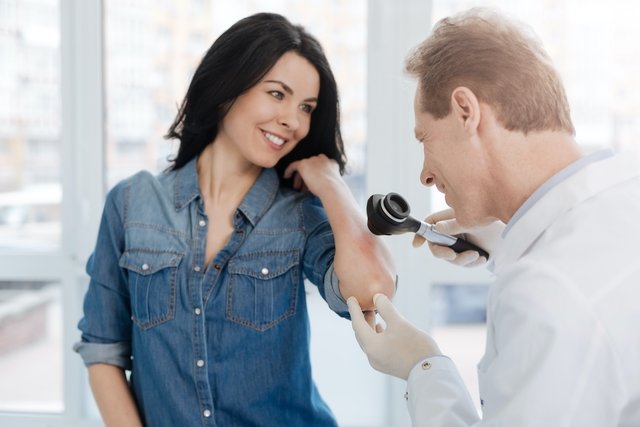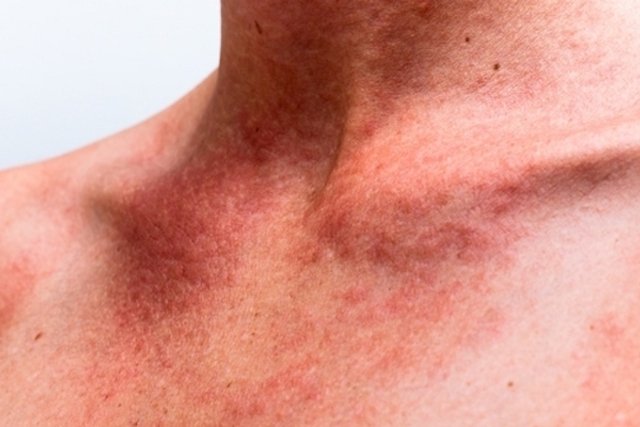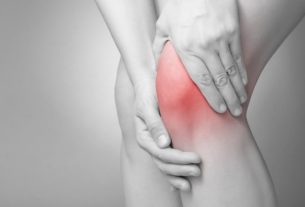Treatment for urticaria can be done with the use of medicines in the form of ointments, tablets or injections, prescribed by the doctor according to the type of urticaria, which can be acute or chronic, and the assessment of symptoms presented such as itching, redness swelling or burning sensation in the skin, for example.
Urticaria can arise due to allergies to food, clothing fabric, animal hair, dust or the use of medicines, for example, and one of the simplest and most effective ways to treat urticaria is to identify the agent causing the symptoms and, thus, , avoid contact. See other causes of hives.
The treatment of urticaria must be carried out with the advice of a general practitioner or allergist, who can prescribe the best medicine on an individual basis. In severe cases of hives, with symptoms such as swelling in the mouth, tongue or throat, difficulty breathing, you should seek medical attention as soon as possible or the nearest emergency room, as it can be life-threatening.

The main treatments for urticaria recommended by your doctor are:
1. Calamine ointment for hives
Calamine ointment consists of zinc oxide and other components, with anti-allergic, analgesic and skin-protective action, which help to relieve itchy skin caused by hives due to sunburn.
However, calamine ointment must be used under medical advice as it only helps to relieve superficial itching of the skin and does not treat the cause of the hives, which must be done with the use of oral remedies.
Some examples of products with calamine are Ducilamine from TheraSkin, which can be used in adults and children, and Calamyn, Solardril and Caladryl, which can be used in adults and children over 2 years old, because they contain camphor in their composition, which is contraindicated in children under 2 years of age. See a calendula ointment that can be used on your baby.
2. Anti-allergy pills
Antiallergic tablets for urticaria, such as antihistamines and corticosteroids, may be recommended by your doctor as they have anti-allergic action that helps reduce symptoms of itching, redness, swelling or burning sensations on the skin.
Generally, antihistamines are indicated for the treatment of acute or chronic urticaria. Corticosteroids may be recommended by the doctor for pressure urticaria, vasculitic urticaria or chronic urticaria when the symptoms are very intense or do not improve with the use of antihistamines. Check out the main antihistamines and corticosteroids for urticaria.
In some cases, the doctor may recommend the use of antihistamines and corticosteroids together for chronic urticaria, which is when symptoms last more than 6 weeks, are intense, appear frequently or never disappear.
3. Omalizumab Injection
Omalizumab injection is indicated for chronic urticaria, when the use of antiallergic drugs has not been sufficient to improve symptoms. This medicine is a type of monoclonal antibody that reduces the action of the immune system, helping to alleviate chronic urticaria.
Omalizumab should be used through subcutaneous application, that is, on the skin, as per medical advice, and may be indicated for adults or children over 12 years of age. Learn how to use omalizumab.
4. Adrenaline Pen
In cases where hives are accompanied by serious symptoms, such as swelling of the tongue or lips or difficulty breathing, for example, the doctor may recommend the use of an adrenaline (epinephrine) pen to be injected immediately into the person as soon as these symptoms appear, as they can be life-threatening.
The adrenaline pen is recommended by the doctor for people at high risk of having a serious allergic reaction, and should receive guidance from the doctor regarding the warning signs and severity that may arise, as well as how to use this medicine. After using the adrenaline pen, it is very important to go to the hospital immediately or consult the doctor who prescribed its use. Learn how to apply the adrenaline pen.
Adrenaline in injection form is also used in hospitals with medical indication and applied by nurses in emergency situations caused by severe urticaria to treat swelling in the mouth, tongue or throat and difficulty breathing.
5. Corticosteroid injection
Corticosteroid injection is used in hospitals for the emergency treatment of severe hives with symptoms of angioedema, such as swelling in the mouth, throat or tongue or difficulty breathing, which can be life-threatening.
This treatment for urticaria should only be carried out with medical advice and application of corticosteroids directly into the vein by the nurse, in addition to other medications, such as adrenaline, to control the symptoms of severe urticaria.
6. Home treatment
Some home treatments, such as taking a bath with oatmeal and lavender, or using chamomile tea compresses on the affected area of the skin, can help relieve itchy skin and can be used to complement mild urticaria treatment recommended by your doctor. .
However, it is important to emphasize that the use of these, or any other natural treatment, should not replace the medicines recommended by the doctor, being just a way to help alleviate symptoms more quickly. See some home remedy options for hives.

Sign up for our newsletter and stay up to date with exclusive news
that can transform your routine!
Warning: Undefined array key "title" in /home/storelat/public_html/wp-content/plugins/link-whisper-premium/templates/frontend/related-posts.php on line 12
Warning: Undefined array key "title_tag" in /home/storelat/public_html/wp-content/plugins/link-whisper-premium/templates/frontend/related-posts.php on line 13




